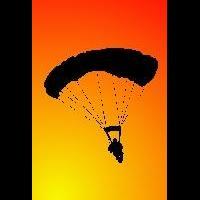Recommended Posts
marinho 0
You got the answer from Mark!!! You use hot knife when you don't need the old binding tape!
Seam ripper - Unpick the first 3 stitches and then every other 3 to 4 on the direction you are going to remove the binding. Then just pull the opposite side thread. This method is for keeping the old binding!
Cheers,
Seam ripper - Unpick the first 3 stitches and then every other 3 to 4 on the direction you are going to remove the binding. Then just pull the opposite side thread. This method is for keeping the old binding!
Cheers,
Gus Marinho
riggerrob 558
I have both types of binders in my shop.
My Para-Gear type folder is adjusted for binding light-weight nylon, like deployment bags.
My (US$350) thick folder - from Atlanta Attachments - is adjusted to bind thick stuff, like container stiffeners.
My Para-Gear type folder is adjusted for binding light-weight nylon, like deployment bags.
My (US$350) thick folder - from Atlanta Attachments - is adjusted to bind thick stuff, like container stiffeners.
fcajump 153
QuoteRemoving binding tape using a hot knife:
This method destroys the tape.
Use the flat side of the blade to sear the threads on one side of the folded tape. Pull the threads on the opposite side.
Mark
Mark,
Thanks! Had always simply picked them out without thinking whether to reuse or not (duh..).
Jim
Always remember that some clouds are harder than others...
ahdz 0
See these excellent posts on this subject by Kevin McGuire
http://www.dropzone.com/cgi-bin/forum/gforum.cgi?post=1459472;search_string=binding%20101;#1459472
http://www.dropzone.com/cgi-bin/forum/gforum.cgi?post=1459361;search_string=binding%20101;#1459361
Regards,
Andrew
http://www.dropzone.com/cgi-bin/forum/gforum.cgi?post=1459472;search_string=binding%20101;#1459472
http://www.dropzone.com/cgi-bin/forum/gforum.cgi?post=1459361;search_string=binding%20101;#1459361
Regards,
Andrew



This method destroys the tape.
Use the flat side of the blade to sear the threads on one side of the folded tape. Pull the threads on the opposite side.
Mark
Share this post
Link to post
Share on other sites